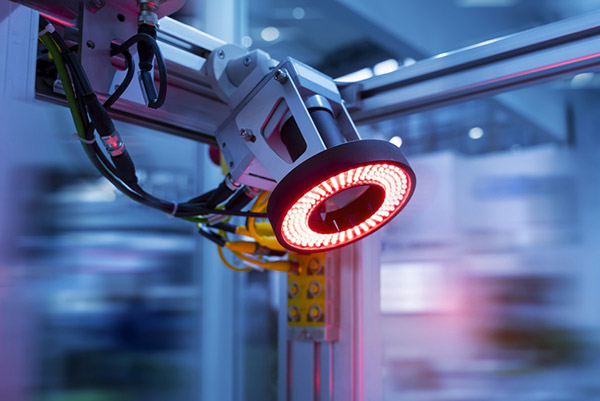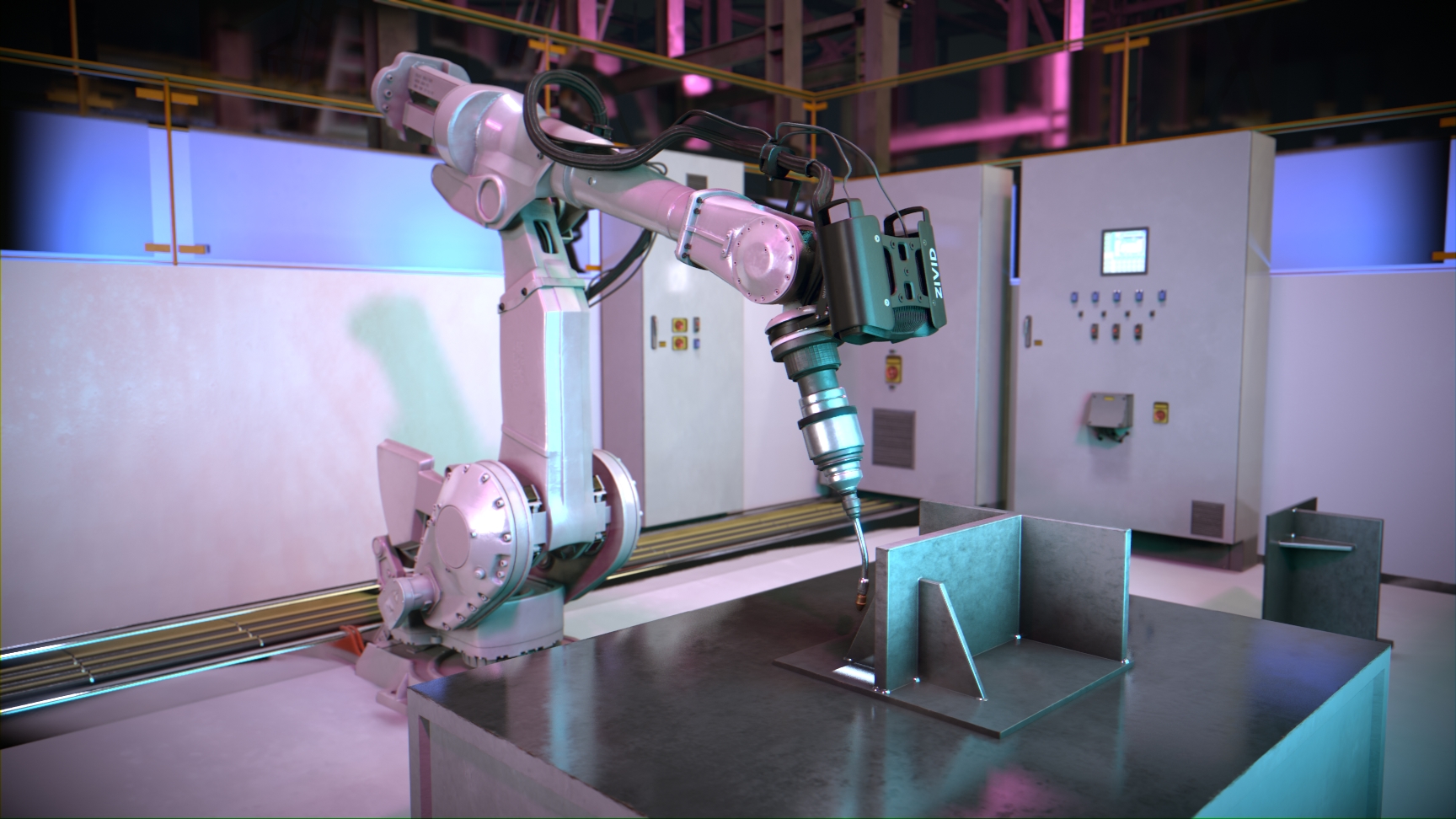How optical measurement system is reshaping automation workflows
Why Robotic Vision Is Vital for Advancing Accuracy in Production Industries
Robotic vision has become a crucial component in modern-day production. It encourages makers to assess aesthetic data with amazing accuracy. This capacity boosts quality control and reduces the probability of problems. As industries endeavor for greater effectiveness, understanding the complexities of robotic vision ends up being important. The interplay in between innovation and operational processes raises crucial concerns concerning future advancements and their implications. What exists in advance for accuracy in production?
Comprehending Robotic Vision Innovation

Enhancing Quality Assurance With Robotic Vision

Boosting Functional Efficiency With Automation

Automating manufacturing procedures with robotic vision greatly boosts manufacturing speed, enabling quicker turnaround times. This technology likewise decreases mistake rates, making certain higher accuracy in operations. In addition, structured resource monitoring is achieved, causing much more efficient use materials and labor.
Boosted Production Rate
While the integration of robotic vision in production has changed functional procedures, its most substantial advantage depends on improved manufacturing speed. By utilizing sophisticated image processing and real-time data analysis, robotic vision systems can quickly determine and respond to manufacturing demands. This increased responsiveness eliminates hold-ups frequently related to hands-on inspection and decision-making processes. In addition, these systems can run continually without exhaustion, making certain that manufacturing lines keep high throughput. The ability to identify and attend to concerns immediately further streamlines process, permitting makers to optimize output levels (optical measurement system). Consequently, companies take advantage of minimized cycle times and increased efficiency, placing them competitively out there. Boosted manufacturing speed, driven by robotic vision technology, eventually results in boosted functional effectiveness throughout the production landscape
Decreased Mistake Fees
As manufacturing speed boosts, maintaining precision ends up being vital in producing processes. Robotic vision systems substantially add to reduced mistake rates by giving specific dimensions and real-time assessments. These sophisticated systems make use of high-resolution video cameras and advanced algorithms to spot problems, imbalances, or incongruities in products during setting up. By automating quality control, makers can promptly identify and correct concerns that human inspectors may ignore. This not just decreases waste but also improves total item top quality. Additionally, the integration of robotic vision decreases irregularity in production, ensuring that each product fulfills stringent specs. Producers experience fewer costly recalls and raised customer contentment, inevitably leading to an extra effective and rewarding operational design.
Streamlined Resource Management
Reliable source monitoring is my blog essential for optimizing operational efficiency in manufacturing, particularly when incorporated with robotic vision systems. These systems enhance the capacity to check and designate sources precisely, ensuring that materials and labor are used successfully. By employing advanced visual technologies, producers can determine inadequacies in actual time, minimizing waste and improving manufacturing timelines. Additionally, robotic vision allows exact inventory monitoring, reducing the threat of overstocking or stockouts. Automation of these processes not just enhances operations yet also permits human workers to concentrate on higher-value tasks, cultivating development and performance. Because of this, business can accomplish significant expense financial savings while maintaining top quality criteria, ultimately positioning themselves extra competitively in the sector.

Reducing Human Mistake in Manufacturing Processes
Human mistake remains a substantial obstacle in manufacturing procedures, frequently bring about costly errors and ineffectiveness. In atmospheres where precision is paramount, even minor gaps in judgment can result in defective items or hold-ups in manufacturing routines. Robotic vision systems can alleviate these threats by giving exact and regular tracking of producing procedures. By automating tasks such as quality assurance and production line inspections, these systems lower the reliance on human oversight, thus minimizing the potential for errors.Moreover, robotic vision technology improves information accuracy, permitting real-time modifications based upon visual responses. This capacity guarantees that any type of inconsistencies from established standards are immediately recognized and corrected, additionally decreasing the likelihood of blunders. As producers progressively adopt robotic vision, they can anticipate not only to improve precision and efficiency yet additionally to website link promote a more secure working atmosphere by minimizing the pressure on human drivers.
The Duty of Expert System in Robotic Vision
Expert system substantially boosts robotic vision by utilizing artificial intelligence algorithms and progressed image processing techniques. These modern technologies allow robotics to interpret aesthetic information with higher accuracy, improving both efficiency and accuracy in making setups. Because of this, the combination of AI into robotic vision systems represents a pivotal advancement in automation.
Equipment Understanding Algorithms
Machine learning formulas are reinventing robotic vision in production by enabling devices to analyze and analyze visual information with impressive precision. These algorithms enable robotics to learn from large datasets, adjusting to brand-new circumstances and improving their efficiency with time. By leveraging techniques such as supervised and without supervision learning, robotic systems can identify patterns and abnormalities in real-time, which improves quality control and lowers waste. Furthermore, artificial intelligence helps with better decision-making processes, allowing robotics to optimize their actions based on found out experiences. As these algorithms evolve, they equip robotic vision systems to carry out increasingly complicated tasks, inevitably driving efficiency and accuracy in manufacturing operations. The integration of artificial intelligence subsequently plays a crucial duty in the innovation of robotic vision innovation.
Photo Handling Methods
Enhancing the capabilities of robotic vision, image handling techniques play a vital duty in making it possible for systems to analyze visual information effectively. These methods include formulas that boost picture quality, extract appropriate features, and identify patterns within visual information. By using methods such as side discovery, division, and item acknowledgment, robotic systems can recognize and identify elements with impressive precision. The integration of expert system better intensifies these methods, enabling flexible discovering and improved decision-making in vibrant settings. As a result, robotic vision systems can not only spot issues however additionally optimize procedures, bring about boosted performance and accuracy in manufacturing. The continuous advancement of image handling strategies stays essential to the development of robotic vision in industrial applications.
Future Trends in Robotic Vision for Production Industries
As markets significantly focus on efficiency and precision, the advancement of robotic vision modern technology is readied to change making processes substantially. Future trends indicate considerable advancements in synthetic intelligence and machine knowing integration within robotic vision systems. These renovations will certainly enhance real-time decision-making capacities, allowing robots to adapt to varying conditions autonomously. Additionally, the fostering of 3D vision systems is anticipated to increase, offering more precise spatial understanding and item recognition. Cooperations in between robotics and human employees might additionally progress, with advanced vision systems assisting in safer and a lot more efficient communications. In addition, using side computing will likely make it possible for faster data processing, lowering latency and boosting functional responsiveness. As these patterns unfold, the manufacturing sector stands to gain from enhanced quality assurance, decreased waste, and structured operations, eventually causing enhanced competition in a swiftly altering market.
Regularly Asked Questions
Exactly How Does Robotic Vision Differ From Traditional Equipment Vision Equipments?
Robotic vision incorporates sophisticated algorithms and real-time processing, enabling dynamic interpretation and communication with settings. In comparison, typical machine vision mainly concentrates on fixed photo capture and evaluation, restricting adaptability and responsiveness in complex manufacturing situations.
What Industries Benefit A Lot Of From Robotic Vision Modern Technology?
Different markets profit greatly from robotic vision technology, including automobile, electronics, and food processing. These fields leverage boosted click now accuracy, effectiveness, and flexibility, inevitably enhancing manufacturing quality and minimizing operational expenses via advanced automation services.
Can Robotic Vision Solutions Be Integrated With Existing Production Equipment?
Robotic vision systems can without a doubt be incorporated with existing production tools. This integration improves functional efficiency, enabling smooth partnership between conventional equipment and progressed aesthetic technology, inevitably boosting general production processes and end results.
What Are the Expenses Connected With Carrying Out Robotic Vision Solutions?
The expenses associated with applying robotic vision options vary considerably, affected by elements such as system complexity, required software program, hardware components, assimilation with current equipment, and recurring upkeep expenditures, inevitably influencing total return on financial investment.
How Do Upkeep and Assistance for Robotic Vision Equipments Job?
Upkeep and assistance for robotic vision systems entail normal software updates, hardware assessments, and troubleshooting. fibre testing equipment. Vendors commonly use service arrangements, making sure timely aid and lessening downtime to maintain peak performance and integrity in industrial applications